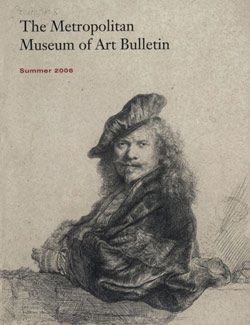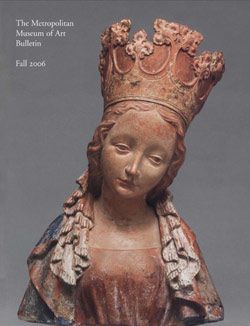Study Sheet with Three Women and a Boy
Rembrandt (Rembrandt van Rijn) Dutch
Not on view
Rembrandt often picked up pen and paper to capture a briefly glimpsed pose or a fascinating character he observed on the street, and he also made sketches to work out the expression or stance of figures destined for prints or paintings. He may have drawn the figures on this sheet from life, but the costume of the old woman viewed from several angles as well as her pose and the pose of the young man in the center suggest that they were ultimately intended as studies for biblical characters. In a few loose strokes of iron-gall ink, Rembrandt masterfully communicated surprise in the old woman at the top and humble submissiveness in the man at the center. Both these sketches relate loosely to figures in Rembrandt's etching The Angel Departing from Tobit's Family, dated 1641, and may represent his initial thoughts for these characters. The combination of broad pen strokes (in the drapery) and more refined lines (in the face of the old woman at the top and on the right) is typical of Rembrandt's drawing style of the late 1630s.
Due to rights restrictions, this image cannot be enlarged, viewed at full screen, or downloaded.
This artwork is meant to be viewed from right to left. Scroll left to view more.






